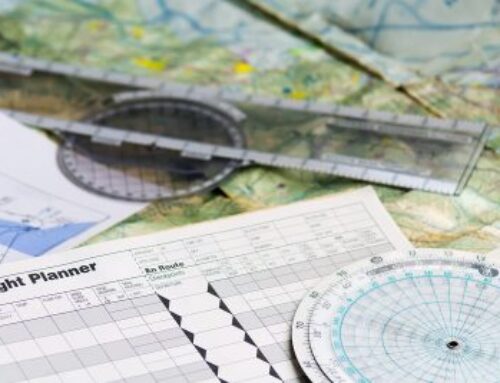How an aircraft navigation system works

Have you ever wondered how pilots know where they are going? Planes travel thousands of miles in the skies and, although the horizon may seem all the same, they still manage to reach their exact destination.
Piloting a plane to its destination is more like navigating at sea than driving a vehicle, such as a car: in fact, an aeroplane, just like a ship, relies on a complex navigation system that allows the pilot to orient him/herself among the clouds.
Aircraft navigation systems
The navigation instruments available to the pilot include the set of systems on board the aircraft and the navaids (radio navigation aids), which help to detect the position of the aircraft by the pilot.
At the start of the flight, the pilots load a predetermined route into the flight management system: once the route has been set, the pilots can monitor it on their screens during the flight. They can also monitor much more around their flight path, such as the presence of other airports, other aircraft, mountains and bad weather.
On-board navigation systems can be divided into:
– the Global Navigation Satellite System or GNSS;
– the Inertial Navigation System or INS, and
– the Flight Management System or FMS.
The Global Navigation Satellite System (GNSS)
This is the set of navigation systems that are used to know the coordinates, altitude, speed and other parameters of the aircraft. The most famous systems of this type are the American GPS (Global Positioning System), the Russian GLONASS (GLobal’naja NAvigacionnaja Sputnikovaja Sistema) and the European Galileo. They exploit geo radiopositioning through a network of artificial satellites in orbit.
The Inertial Reference System (IRS)
The IRS is an autonomous system capable of tracking our position using accelerometers and gyroscopes. At the beginning of the flight, when the plane is still on the ground, the pilots indicate the exact position in terms of latitude and longitude to the system.
From that moment the IRS detects any movement through any axis and thus calculates the position of the aircraft based on this movement. It does not require external inputs, other than the coordinates entered at the start of the flight.
The Flight Management System (FMS)
Once the route has been determined, the information is entered into the Flight Management System (FMS), which we can define as the brain of the navigation of the aircraft.
Its task is to help pilots in calculating the flight parameters and, therefore, in managing navigation.
The FMS facilitates the work of pilots, also increasing flight safety.
Some features of this system are to:
– configure the autopilot to follow the route set before take-off;
– configure the take-off and approach routes and the information indicated by the flight controllers;
– help to calculate the flight parameters;
– recommend the power settings, to reduce fuel consumption, and
– estimate the arrival time within the route.
Navaids (radio navigation aids) for an airplane
Today, thanks to the possibility of instrumental flights, navaids are rarely used during cruising. However, they still play a key role in the initial phases of initial climb, approach and landing.
Radio assistance transmits radio signals that the pilot receives by tuning the equipment on board to the relevant frequencies. Once the route is determined, it is sent electronically to the Air Traffic Flow Management (ATFM). The Air Traffic Flow Management (ATFM) analyzes the proposed route and determines whether the current air traffic can accommodate the route. The local air traffic controller will inform the pilot during take-off if the route is clear. In this case the pilot can proceed.
As you may have already guessed, it is really difficult for a pilot to get lost thanks to this complex navigation system: there is a lot of information and what matters in the end is to interpret this information in the right way.
All categories
Popular Posts
Recent Posts






